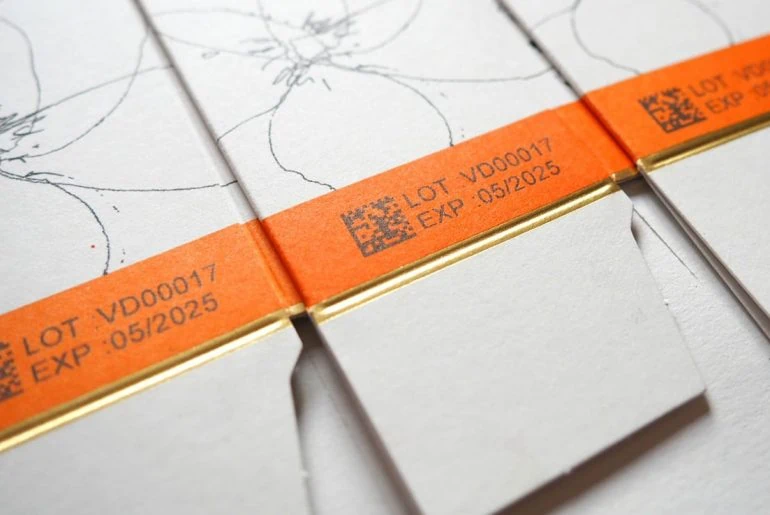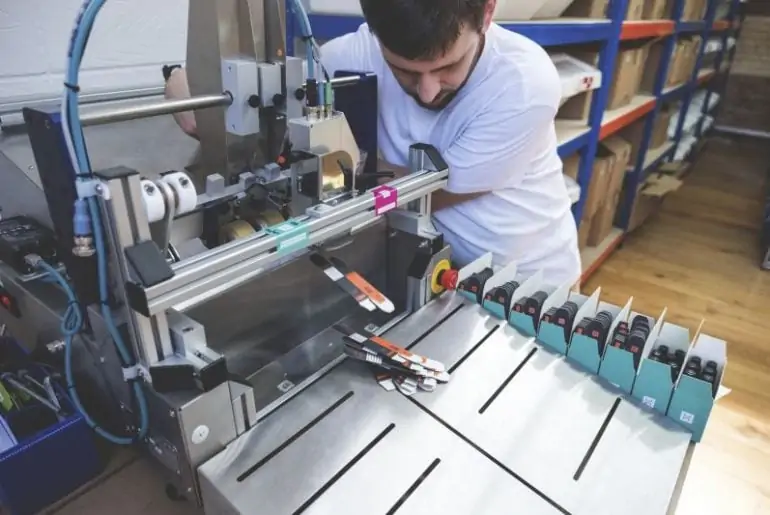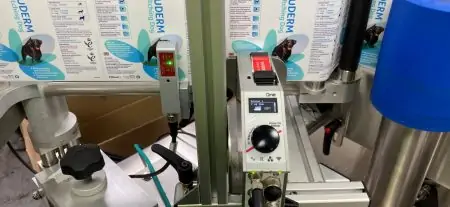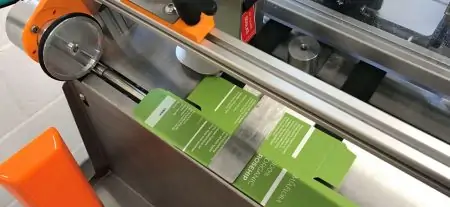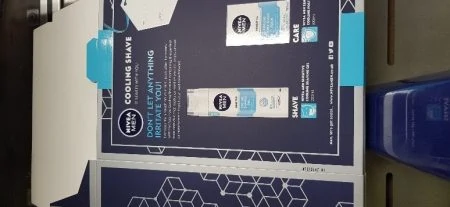Practical and cosmetic
Nowadays, thanks to solvent-based technology TIJ printers can also cope with applying code direct onto glossy surfaces prevalent in the luxury brand market, often with greater clarity than continuous inkjet (CIJ).
Because TIJ systems print at a resolution of up to 600dpi the font of any overprinted information can be adapted to match the carefully-designed branding on the package. This can be especially beneficial in the cosmetic market, for example identifying different lipstick shades on a small packaging space without losing brand differentiation. Likewise, if brand owners prefer coded information to be clear but also discreet, TIJ print density can be lightened.
In contrast, CIJ systems typically print characters using a 7×5 matrix, which doesn’t provide great resolution and cannot hope to match specialist fonts. TIJ also offers more general advantages over CIJ in terms of convenience, cleanliness and cost. For instance, the cost per character using TIJ can be four times less expensive than CIJ. And they use a clean, compact, cartridge-based system that’s virtually maintenance-free, with no associated spillage or mess.
London based e-cigarette company Shoreditch decided on a Rotech standalone friction feed overprinting system fitted with iJet TIJ coding system to meet labelling rules without having to make changes to the rest of its production line. It is also allowing Shoreditch to protect its branding and minimise the number of unique carton designs it needs to deploy across its range of vaping products.
Following a 19 May 2017 deadline, all vaping liquids and cartridges for sale in the UK are required to comply with the Tobacco and Related Products Regulations (TRPR) 2016. TRPR requires all nicotine containing e-liquids, and the hardware to hold them, to meet strict labelling standards. This includes displaying a health warning about nicotine over at least 30% of the two largest surfaces of the unit packaging.
We previously put batch codes directly on the bottle labels but there’s not much room on there. We’re a brand-led business and we didn’t want to use the real estate of the bottle for the health warning since it wouldn’t leave much room for anything else, explains Andy Kirby, director of Shoreditch. “We therefore decided to insert the bottles into individual unit packs so they can have the warning and all the other information on there.
Fighting luxury fakes
High-end brands are also targets for counterfeiting, with cosmetics, perfumes and personal care items particularly vulnerable. In June 2017, the European Union Intellectual Property Office (EUIPO) reported that legitimate brands lose around EUR 5 billion annually due to counterfeit products, representing almost 8% of the sector’s sales, with an estimated 80,000 jobs lost as a result.*
€605 million, or 3.3% of the UK pharmaceutical sector’s sales, is now lost annually as a result of counterfeiting, with 2,940 direct jobs lost. And task forces are finding more fake drugs every year.
TIJ can help strengthen anti-counterfeiting measures. While the main coding information can be printed as normal, UV-fluorescent inks can also be used to add security information to the pack that only shows up under UV lights. What’s more, the systems used to feed packs through the printer can also be used to add a security label.


